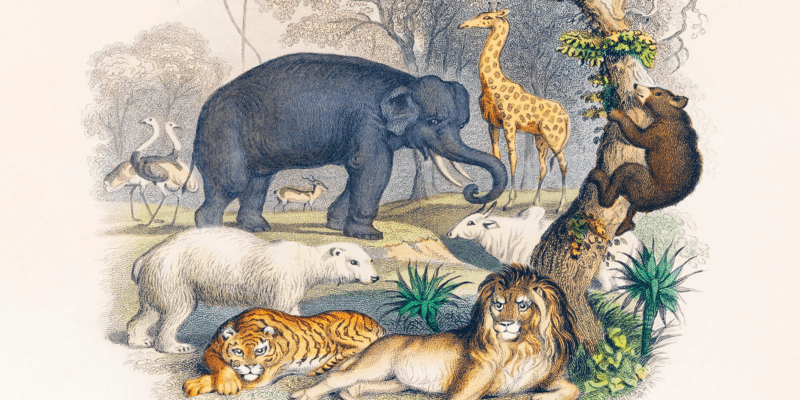Glimmers

Glimmers is a fairly new word, isn’t it? Is it just another word in the dictionary, or does it hold some undiscovered relevance in your life? Why am I writing about it, or why are you even reading about it? To be true, it is not just another word. It has a beautiful meaning and much greater importance in our life.
“Glimmers refer to small moments when our biology is in a place of connection or regulation, which cues our nervous system to feel safe or calm. We are not talking great, big, expansive experiences of joy or safety or connection, these are micro-moments that begin to shape our system in very gentle ways,” says Deb Dana, a clinician, author, and speaker specialising in complex trauma.
Before we delve deeper into the concept of glimmers, let’s first understand the exact opposite of glimmers — triggers. Triggers are cues that are potential threats to our instantaneous or long-term well-being. Anything that indicates that we may be in danger or makes us feel withdrawn is a trigger for our mind. As a response to triggers, our brain releases stress hormones like cortisol and adrenaline. These hormones further result in our bodies taking one of the following actions to protect us:
Fight: facing a threat aggressively.
Flight: running away from the perceived threat.
Freeze: inability to act against or move away from the danger.
Fawn: acting to try to please to avoid any conflict.
When we are triggered, our brain goes back to past experiences and associates past traumas with present events as if they’re happening right now. It leads to our brain automatically picking up one of the above four responses.
Now that we know what triggers are and how our bodies respond to them, let’s understand the role of glimmers. I’ll start by addressing a few questions. Firstly, how exactly do we identify them, and what role do they play in our lives? They are the moments and things that give us a feeling of calm, joy, and peace. They reduce emotional stress and make us feel at ease, which further leads to a state of mind where we can easily grasp and learn. It is the state where we can thrive on our best abilities and perform well in life.
Glimmers are the micro-moments — the ones we do not consciously appreciate — that brings us a smile or calm or joy. Some simple examples are things around in nature like sunshine, greenery, or hearing the water flow. It could also be doing our favourite things like petting an animal, singing, or dancing. Wrapping our body in a soft cosy blanket, the aroma of freshly baked bread or muffins, and the smell of a book can all bring us joy too. Releasing built-up energy and emotions from the body by shaking it is also an example.
For each of us, glimmers can be different. When we see, hear, or experience something, our mind registers all the feelings we experience at that moment — good and bad. Based on past experiences, preferences, and behaviours, each human has different feelings about different things.
For example, I am super excited when I see a roller coaster because it generates a feeling of adventure and joy in me. Whereas, the same roller coaster repels my friend because it generates a feeling of fear in my friend’s mind. Similarly, my sister and I find immense joy in seeing a water body as it brings us a feeling of calm and we enjoy taking a dip wherever possible, but the same water body causes anxiety and triggers fears in our mother’s mind because of a childhood experience that makes her correlates water bodies with drowning. Seeing flowers usually brings a smile to most people’s faces but there are a few of us who dread flowers because it triggers their asthma or allergies. One has to identify these micro-moments of calm, joy, and happiness in our lives and make conscious efforts to enjoy them as much as possible.
Glimmers are known to release the happy hormones — dopamine, oxytocin, serotonin, and endorphins (D.O.S.E) — in our bodies. These hormones are responsible for making us feel happier, and transform us into the best version of ourselves. They ensure we are more anchored than agitated (as in the case of triggers). They also allow us to experience emotional stability, safety, and cosiness within an area or with certain people. Eventually, all this will make us more comfortable and will open our minds to learning and absorbing things around us.
What we know about glimmers so far:
- They are the opposite of triggers
- They are small moments of happiness or beauty that regulate our nervous systems
- They cue safety to the survival brain
- They instil peace and evoke joy
- They can be internal or external
- They improve mood and mental health
- They help build nervous system resilience
- They are a trauma-recovery resource
- Each day brings with it, hundreds of glimmers.
- Noticing them is a powerful healing practice that adds up over time
- Seeking them will change mental health and life
In conclusion, glimmers are subtle moments of inspiration and hope that bring us joy. These seemingly insignificant moments have the power to bring a spark to our lives that can instantly make us feel uplifted and guide us through the darkness. Glimmers are reminders that we are all capable of finding something beautiful every day. Embracing these glimmers can lead to a more fulfilling existence. I hope that reading this article has made you realise how understanding the concept of glimmers and making a conscious effort towards recognising the various things in life that bring you joy can improve the overall quality and happiness quotient of your life. While it is crucial to identify our triggers to work on them, it is equally imperative to recognise our glimmers and practice using them daily.






